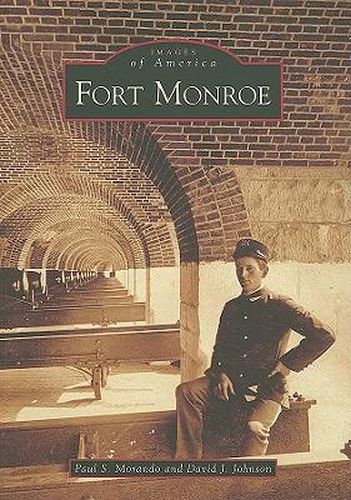Readings Newsletter
Become a Readings Member to make your shopping experience even easier.
Sign in or sign up for free!
You’re not far away from qualifying for FREE standard shipping within Australia
You’ve qualified for FREE standard shipping within Australia
The cart is loading…






Fort Monroe was once a powerful symbol of America’s national defense system. From 1823 to 1945, its primary military mission was to protect Hampton Roads and the entrance to the Chesapeake Bay from enemy attacks. Over the years, as military technology advanced, Fort Monroe’s defensive posture changed. To counter potential threats, American coastal defense installations such as Fort Monroe developed sophisticated steel disappearing guns, mortars, anti-aircraft weapons, and submarine mines. As the site ofthe army’s Coast Artillery School, Fort Monroe trained thousands of soldiers. After World War II, Fort Monroe’s role as a coastal defense installation ended, and the post took on new missions as a training headquarters facility. With more than 200 original photographs, this volume unveils the layered history of this massive stone-and-brick installation from the end of the Civil War to the present. This volume will highlight more than 140 years of images that capture Fort Monroe’s varied missions, historic buildings, the families who lived there, the resort hotels, and other aspects of this unique national landmark –p. [4] of cover.
$9.00 standard shipping within Australia
FREE standard shipping within Australia for orders over $100.00
Express & International shipping calculated at checkout
Fort Monroe was once a powerful symbol of America’s national defense system. From 1823 to 1945, its primary military mission was to protect Hampton Roads and the entrance to the Chesapeake Bay from enemy attacks. Over the years, as military technology advanced, Fort Monroe’s defensive posture changed. To counter potential threats, American coastal defense installations such as Fort Monroe developed sophisticated steel disappearing guns, mortars, anti-aircraft weapons, and submarine mines. As the site ofthe army’s Coast Artillery School, Fort Monroe trained thousands of soldiers. After World War II, Fort Monroe’s role as a coastal defense installation ended, and the post took on new missions as a training headquarters facility. With more than 200 original photographs, this volume unveils the layered history of this massive stone-and-brick installation from the end of the Civil War to the present. This volume will highlight more than 140 years of images that capture Fort Monroe’s varied missions, historic buildings, the families who lived there, the resort hotels, and other aspects of this unique national landmark –p. [4] of cover.